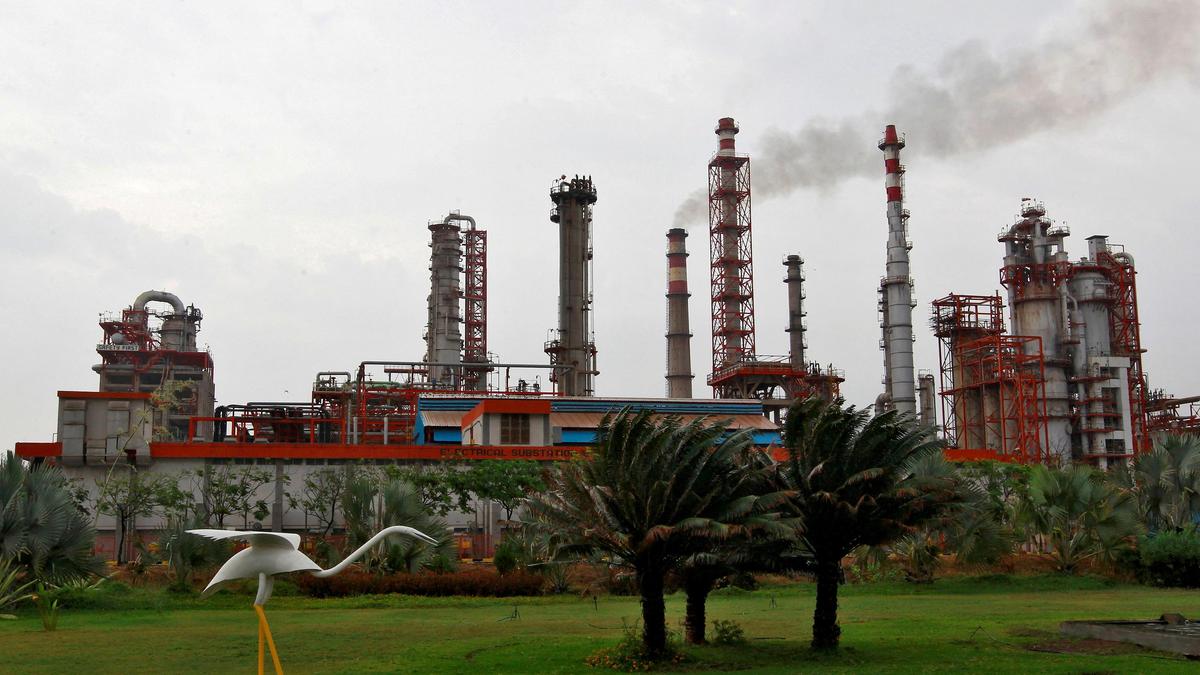Copyright thehindubusinessline

The US President, Donald Trump, believes that imposing sanctions on Russia’s two largest oil companies will impact Kremlin’s finances. According to reports, Russian President, Vladimir Putin, has said they will not have much of an impact on its economy. While the two battle it out, what it will do is test the diplomatic strength of big oil consumers like India and the overall vulnerability of the global oil market due to uncertainty in pricing. No sooner were the sanctions announced, there was a spike in prices before stabilising. Technically, Indian refiners are not banned from buying Russian-origin crude, but they must avoid transactions with the sanctioned companies and their subsidiaries. On its part, India has been maintaining the stance that its economy comes first and wherever it gets cheap oil it will opt for it. There has been no diktat yet to the oil companies to cut down on sourcing Russian oil, according to those associated with the developments. The concern for New Delhi is not supply but pricing. As much as 85-90 per cent of India’s crude requirement is met through imports. The Budget has taken an average of $70/barrel for crude pricing; as of October 24, 2025, Indian refiners sourced their crude oil at $68.37 a barrel. Not only India, even the US will be affected by high crude oil prices. According to energy expert Narendra Taneja, “Rosneft and Lukoil are key players in the global oil supply system. Rosneft, in fact, is the third biggest producer in the world. The American president has sanctioned these two big Russian corporations, but not the Russian oil per se — so there are still no American or European sanctions on Russian oil. The American game is clear: harass the buyers of Russian oil without causing any significant disruption in the supply of Russian oil into the global oil supply chains.” The two sanctioned companies are estimated to account for 50 per cent of Russia’s oil production. Therefore, prices can hurt even if supplies are not a problem. “Clearly, the US has left enough headroom for Russian oil to find its way for exports one way or another. Trump knows any major disruption in oil supply from Russia will lead to higher oil prices, hitting American economy and his loyal voters the most.... However, the fear of secondary sanctions by the US against any buyer of Russian crude is real and may force many buyers to recalibrate their sourcing strategy,” Taneja added. “My sense is Trump does not want to go full force after Moscow yet, leaving all channels open for negotiations on Ukraine. Given a chance, Trump wants to build business bonhomie with the Kremlin,” he said, adding “therefore, let us wait and watch how all this new sanctions business go.” Array of obstacles According to Umud Shokri, Energy Strategist and Senior Visiting Fellow at George Mason University, “By hitting Rosneft and Lukoil, Washington anticipates generating formidable hurdles for any business dealings with them, effectively curbing Russia’s petroleum outflows and eroding its energy-driven income streams. For India, a top importer of Russian oil, these measures pose a thorny array of obstacles.” Major Indian refineries — both public and private — depend heavily on Russian supplies routed through pathways dominated or shaped by Rosneft and Lukoil, he said, adding that “the penalties heighten the threat of delivery interruptions and regulatory entanglements, compelling these operators to swiftly overhaul their sourcing tactics. To sustain vital inputs for refining and chemical production, India might need to broaden its supplier base or pivot to unaffected Russian intermediaries and traders.” “The impending November 21 enforcement date injects immediate pressure, demanding that refineries adapt to shifting regulatory landscapes and supply chains in a compressed time-frame. Even if Indian purchasers turn to roundabout or resale markets for more Russian volumes, such workarounds could inflate expenses or introduce supply-chain snags, squeezing profit margins and pushing up local fuel costs,” he said. Sumit Ritolia, Lead Research Analyst, Refining & Modeling at Kpler, agrees that the latest development marks a clear escalation that will compel Indian refiners to recalibrate — not retreat — in their Russian oil engagement. “While the sanctions target entities, not the commodity, they effectively render barrels linked directly to these firms off-limits for compliance-conscious buyers like Reliance Industries Ltd and public sector oil marketing companies,” he said. On its part, industry sources say that Nayara Energy is under no contractual obligation to buy oil only from Rosneft and that it can be sourced from other entities too. Nayara is co-owned by PJSC NK Rosneft — Russian state-owned oil company, and Kesani Enterprises Company Ltd — an investment consortium formed by Mareterra Group (through its subsidiary Hara Capital Sarl) and the Russian investment group UCP, which has come under international scrutiny. “India can still source Russian barrels through alternative sellers — primarily non-sanctioned traders, smaller Russian producers, or through intermediaries. This is effectively how trade evolved post-2022: a network of “shadow intermediaries” or newly incorporated trading arms that handle payments, insurance, and logistics, keeping the refiners one step removed from sanctioned entities,” Ritolia said. Indian refiners will turn to the Middle East (Saudi Arabia, the UAE, Iraq), West Africa (Nigeria, Angola), Latin America (Brazil, Guyana, Mexico), and the US for incremental barrels. Switching is not an issue, the constraint lies in economics — higher freight costs and narrower arbitrage spreads make substitution expensive, he stated. However, Russia will remain in India’s mix through non-sanctioned intermediaries. Even with Russian Urals accounting for 30-35 per cent of India’s crude slate, refiners continue to process a diverse mix of feedstocks. These include Basra Medium and Heavy (Iraq), Maya (Mexico), Castilla and Vasconia (Colombia), WTI (US), Agbami (Nigeria), and Arab Extra Light and Medium (Saudi Arabia), among others. “The operational flexibility allows them to seamlessly switch between crudes based on market economics, quality, and availability,” he said. India has benefited from the deep discounts on Russian oil since 2022. Now, New Delhi needs to ensure continued economic advantage and, more importantly, not buckle under US pressure. Published on October 28, 2025



